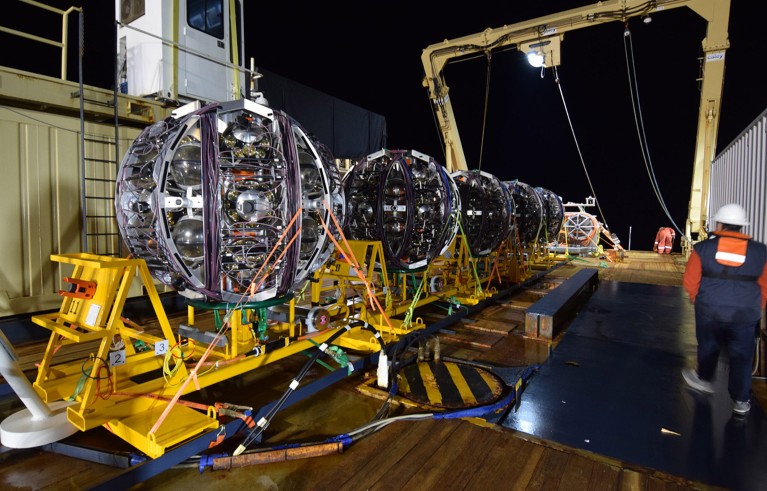- Courses
- GS Full Course 1 Year
- GS Full Course 2 Year
- GS Full Course 3 Year
- GS Full Course Till Selection
- CSAT
- 5 LAYERED ARJUNA Mentorship
- Public Administration Optional
- Online Program
- GS Recorded Course
- NCERT Batch
- Polity Module Course
- Geography Module Course
- Economy Module Course
- AMAC Module Course
- Modern India, Post Independence & World History Module Course
- Environment Module Course
- Governance Module Course
- Science & Tech. Module Course
- International Relations and Internal Security Module Course
- Disaster Management Module Course
- Ethics Module Course
- Essay Module Course
- Current Affairs Module Course
- ABOUT US
- OUR TOPPERS
- TEST SERIES
- FREE STUDY MATERIAL
- VIDEOS
- CONTACT US
Digantara’s SCOT Mission
Digantara’s SCOT Mission

- On January 14, 2025, Indian space startup Digantara successful launched its Space Camera for Object Tracking (SCOT) mission.
- This marks a significant advancement in Space Situational Awareness (SSA), enhancing India’s ability to monitor and track objects in Low Earth Orbit (LEO).
- Launched aboard SpaceX’s Transporter-12 rocket from Vandenberg Space Force Base, California, SCOT is one of the world’s first commercial SSA satellites.
Mission Overview & Technological Capabilities
- The SCOT satellite is designed to track Resident Space Objects (RSOs) with high precision.
- Unlike traditional tracking systems, it can detect objects as small as 5 cm, offering superior revisit rates and tracking accuracy.
- Operating in a sun-synchronous orbit, SCOT overcomes geographical and weather-related limitations faced by ground-based tracking systems.
- This advanced positioning enhances its ability to monitor space traffic and provide real-time surveillance data.
Funding, Support & Recognition
- The mission is backed by Aditya Birla Ventures and SIDBI, emphasizing the growing private sector contribution to India’s space industry.
- Following the successful launch, Prime Minister Narendra Modi congratulated Digantara on National Startup Day, highlighting its role in bolstering India’s space capabilities.
- Industry experts and political leaders also praised the initiative, recognizing its significance in national security and space operations.
India’s Growing Space Sector & Related Developments
- SCOT’s launch was part of a broader wave of advancements in India’s private space sector. Alongside Digantara’s satellite, Bengaluru-based Pixxel deployed three satellites from its Firefly constellation, demonstrating India's increasing presence in Earth observation and space surveillance.
- These developments mark a new era where private companies actively contribute to India’s expanding space ecosystem.
Space Situational Awareness (SSA): A Critical Need
- Understanding SSA
- Space Situational Awareness (SSA) refers to the ability to monitor, track, and predict the movement of objects in space.
- It plays a vital role in preventing collisions, managing space traffic, and ensuring the safety of space assets. SSA is essential for both government and private entities, as space becomes increasingly congested with satellites, debris, and emerging commercial activities.
- Key Components of SSA
- Tracking & Monitoring – Identifying and following satellites, debris, and RSOs in orbit.
- Prediction & Analysis – Assessing potential collision risks and forecasting orbital movements.
- Communication & Coordination – Sharing space data between government agencies, commercial firms, and global partners.
Challenges in SSA
Despite its importance, SSA faces several challenges:
- Growing Space Debris: The increasing number of satellites and defunct objects raises collision risks.
- Limited Observation Coverage: Many existing tracking systems lack global reach, reducing monitoring effectiveness.
- Cybersecurity Threats: As space assets become more connected, they face risks from hacking and cyberattacks.
SSA Technologies & Advancements
To address these challenges, advanced technologies are shaping the future of SSA:
- Ground-Based Radars & Telescopes – Used for real-time object detection.
- AI & Machine Learning – Enhancing tracking accuracy and predictive analytics.
- Satellite-Based Sensors – Providing continuous in-orbit surveillance.
India’s Role in SSA
- India has been actively strengthening its SSA capabilities through both government and private initiatives.
- The Indian Space Research Organisation (ISRO) is developing the Netra project, a dedicated SSA program aimed at space debris tracking.
- Meanwhile, private companies like Digantara are launching specialized satellites to enhance space object surveillance and traffic management.
Key Objectives of SSA
SSA serves multiple critical functions beyond just tracking space objects. Some of its primary objectives include:
1. Collision Avoidance: SSA plays a crucial role in preventing accidental crashes between operational satellites and space debris. By providing real-time alerts, it ensures safer navigation in orbit.
2. Space Weather Monitoring: Monitoring solar activity and geomagnetic storms is essential to protecting satellites, power grids, and communication systems from solar radiation effects.
3. Satellite Health & Anomaly Detection: SSA helps in tracking spacecraft performance and detecting potential malfunctions or cyber threats, ensuring the longevity and security of space missions.
4. Defense & National Security: With increasing concerns over anti-satellite (ASAT) weapons, SSA enhances military surveillance and intelligence gathering, safeguarding national security interests.
5. Space Traffic Coordination: As satellite constellations grow, managing orbital traffic becomes vital. SSA helps in regulating satellite movements and avoiding congested regions in space.
6. Mission Support for Spacecraft & Space Stations: SSA provides real-time data for mission planning, docking, and station operations, assisting astronauts and automated systems in space.
7. Compliance with International Space Policies: SSA ensures that all space activities align with global space treaties and regulations, promoting responsible and sustainable space exploration.
8. Active Debris Removal Planning: Identifying high-risk debris allows for targeted removal efforts, supporting research on technologies like robotic arms, nets, and lasers for cleaning space junk.
9. Deep Space Object Detection & Planetary Defense: SSA extends beyond Earth’s orbit to monitor asteroids and near-Earth objects (NEOs), aiding in planetary defense initiatives against potential impact threats.
10. Strengthening Global Space Governance: By fostering collaboration between international space agencies and private sector players, SSA promotes data sharing and cooperative efforts for safer space operations.
key Space Situational Awareness (SSA) missions across different countries:
|
Country/Agency |
Mission/Program |
Objective |
|
United States (USA) |
Space Surveillance Network (SSN) |
Tracks satellites and space debris. |
|
Geosynchronous Space Situational Awareness Program (GSSAP) |
Monitors objects in geostationary orbit (GEO). |
|
|
Space-Based Space Surveillance (SBSS) |
Observes space objects without atmospheric interference. |
|
|
Cislunar Highway Patrol System (CHPS) |
Tracks objects beyond GEO, including lunar orbit. |
|
|
European Union (EU) |
EU Space Surveillance and Tracking (EUSST) |
Detects and monitors space debris and collision risks. |
|
ESA’s Space Debris Office |
Develops SSA capabilities and debris mitigation strategies. |
|
|
Asteroid Impact & Deflection Assessment (AIDA) |
Studies asteroid threats and planetary defense. |
|
|
India (ISRO & Private Sector) |
Project NETRA (Network for Space Object Tracking and Analysis) |
Tracks space debris and active satellites. |
|
SCOT (Space Camera for Object Tracking) – Digantara |
India’s first commercial SSA satellite for LEO tracking. |
|
|
Russia |
Okno (Optical-Electronic Complex) |
Ground-based system for tracking space objects. |
|
Krona Radar System |
Monitors space debris and provides military intelligence. |
|
|
China |
Yaogan Satellite Series |
Surveillance and reconnaissance for SSA and military use. |
|
SKYNET |
Network of satellites supporting SSA operations. |
|
|
Japan (JAXA) |
Space Situational Awareness System |
Monitors space debris and collision threats. |
|
Epsilon Rocket Missions |
Tests SSA and space monitoring technologies. |
|
|
Global & Collaborative Efforts |
International Lunar Research Station (ILRS - China/Russia) |
Tracks lunar activities and space sustainability. |
|
DART (Double Asteroid Redirection Test - NASA) |
Planetary defense mission studying asteroid deflection. |
|
|
Inter-Agency Space Debris Coordination Committee (IADC) |
International initiative for space debris tracking. |
Future of SSA & Next Steps for Digantara
- Looking ahead, the future of SSA will see rapid advancements in AI, automation, and active debris removal technologies.
- As more countries and private firms invest in space tracking and surveillance, SSA will play a pivotal role in ensuring sustainable and secure space operations.
- For Digantara, the next steps involve commissioning the SCOT satellite for precise object tracking and fine-tuning its capabilities for optimal performance in the coming weeks.
- With continued innovation, Digantara aims to enhance space safety, support global SSA initiatives, and position India as a leader in space situational awareness.



